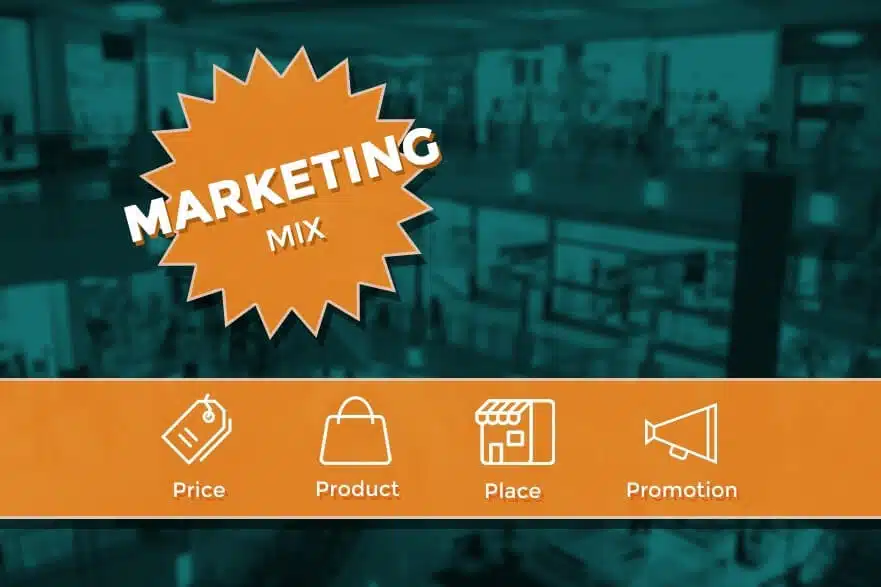

For decades, most marketing agencies used the 4 P’s of the marketing mix: Product, Place, Price, and Promotion. But marketing changes all the time, so why hasn’t the marketing mix changed, too?
Today, the marketing mix has evolved to fit a larger, more complex marketing landscape. We’ve outlined each aspect, new and old, to fit this evolution.
Of course, depending on who you ask, there are other aspects in the marketing mix, like “Perseverance”, “Passion”, and “Positivity” that should be added to the list, but we’ve decided to keep it simple and outline the primary, measurable components of the marketing mix—the parts without which a business can’t succeed.
Here are, in our humble opinion, the updated 7 P’s of the marketing mix.
#1 – Product
What is the value that the consumer receives?
Your product or service is the heart of your business. Without it, everything else will fail sooner or later. Some businesses find success by simply putting all their eggs in this basket, but realistically, that’s not a wise decision.
What You Need To Consider:
- Is my product new or original?
- Is there demand for my product?
- Is my product functional and appealing?
Think it through, take your time, and remember to keep the horse before the cart.
#2 – Place
Where can the consumer acquire the product?
Place is where your product is distributed. Today, this can be a brick-and-mortar, an e-commerce platform, and anything in between. Fortunately, with online marketing, the whole world can have access to your store, no matter where you are.
What You Need To Consider:
- Will my product be more successful online or in a store?
- Will my product succeed in another neighbourhood, city, or country?
- Do I need more than one location to distribute my product?
Research will play a part in where you choose to sell. Don’t be afraid to try different regions for different brands or products.
#3 – Price
What does the consumer exchange for the product?
Your price needs to be fair and profitable. But “price” doesn’t necessarily mean the money the consumer exchanges for the product. Instead, “price” could represent goods, time, effort, or any other resource that’s up for trade.
What You Need To Consider:
- Is my product’s perceived financial and social value reflected by the price?
- Is my product sufficiently profitable?
- Am I able to offer discounts or promotions in the future?
Price is one of the most challenging factors to decide on, but it could ultimately decide the course of your business. Put a lot of research into what people will trade for your product.
#4 – Promotion
What sort of messaging does the consumer receive?
Promotion is how consumers discover your product. This can be through media, word of mouth, or simply how the stores are laid out wherever the product is sold. Promotion is essentially the full scope of the marketing communications aspect of your product.
What You Need To Consider:
- Do I need to build a brand around my product?
- Do I need to advertise my product?
- Do I need to change my methods or strategy?
Promotion requires the most planning, and needs to span far enough into the future that you understand how your brand and product will develop and evolve over time.
#5 – People
What sort of service does the consumer receive?
Your people stand between your product and the consumer. Poor customer service is more than enough to kill a brand’s reputation with a consumer, even when the product is great.
What You Need To Consider:
- Are my service people friendly and helpful?
- Do my service people represent my product?
- Are my service people willing to positively influence my product?
Choose your partners, affiliates, and employees wisely—because they become part of your brand.
#6 – Process
What sort of coordination is necessary to receive the product?
Your process is every step between your product and the consumer. Of course, from your point of view, a million things need to take place before the consumer even places their first order. An e-commerce website needs to be built, along with a marketing strategy, and a logistics system… Lots to think about.
What You Need To Consider:
- Is my process enhancing my ability to generate revenue?
- Are there tools or services that will improve my process?
- Is my process simple and automated?
Your process will require trial and error, especially if you’re a new business owner. But having a plan is the first step to long-term efficiency.
#7 – Proof
What are the physical takeaways for the consumer?
Your proof is the tangible evidence of your product. A box of cereal, straight teeth, and shipping notifications are all considered “proof” that the consumer received the product.
What You Need To Consider:
- Will takeaways fill a void in your product’s perceived value?
- Do the packaging and distribution method enhance the perceived value?
- Does the product represent the communicated message?
People like to know that they got something in return that they can see, smell, hear, taste, or feel—even if it’s just a receipt for the exchange. It validates the experience and gives the consumer a sense of value from the exchange.
Did we miss a key component to building and marketing a brand? Let us know by leaving a comment!

Recent Articles
Write For Us
Think you’ve got a fresh perspective that will challenge our readers to become better marketers? We’re always looking for authors who can deliver quality articles and blog posts. Hundreds of your peers will read your work, and you will level up in the process.Ready to grow? Say Hello






